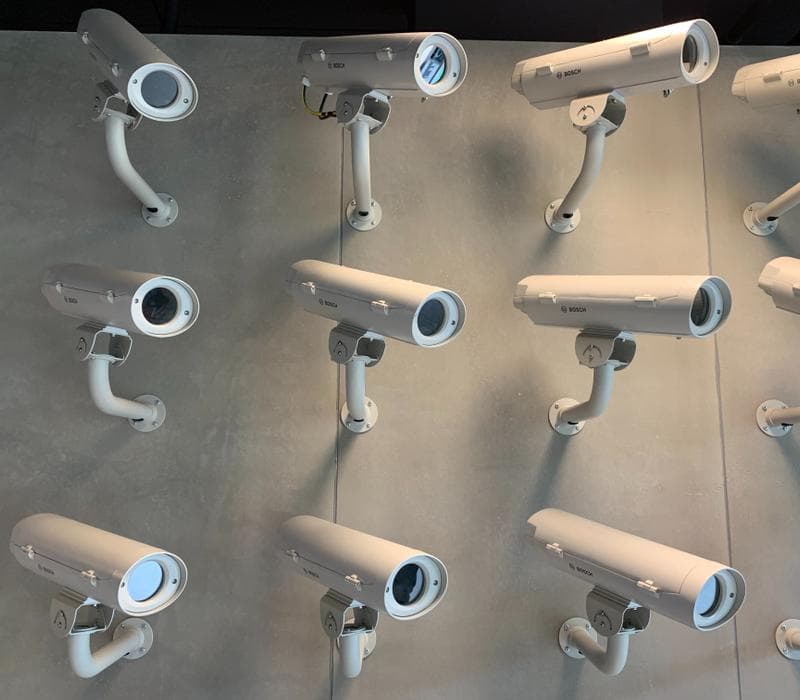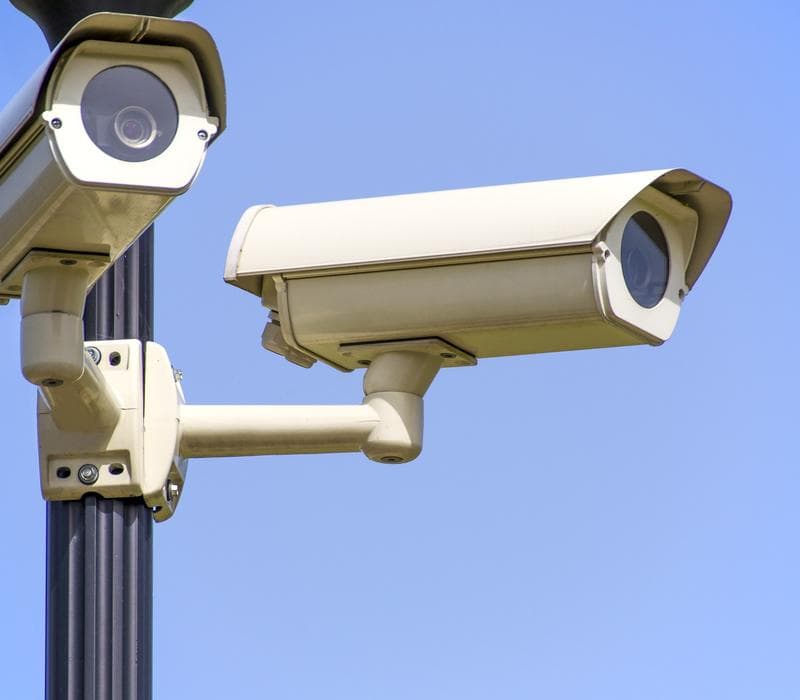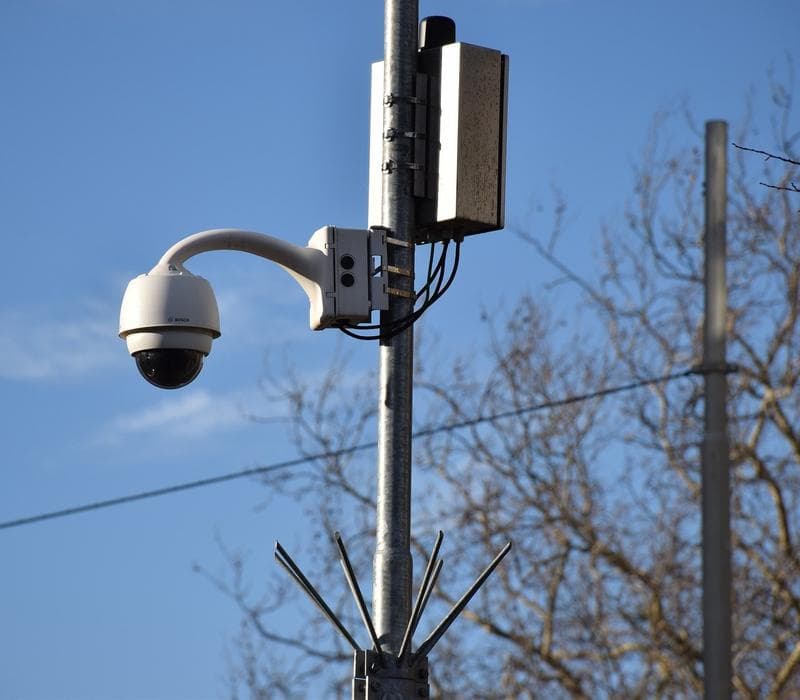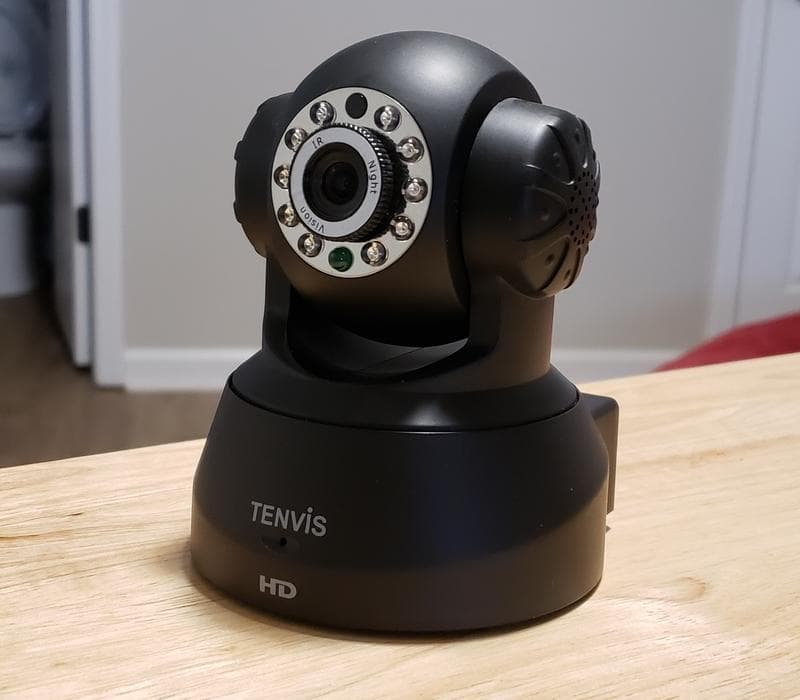
If you are new to home security and surveillance systems, you might be wondering what are the different types of security cameras? A quick browse on Amazon or in the store, and you will find camera systems that have many forms, features, and deployment methods. It is easy to lose yourself in such a landscape, so we put together a small guide to help you classify different security cameras.
There are essentially two types of security cameras: analog, closed-circuit television (CCTV) cameras and digital, Internet Protocol (IP) cameras.
Analog CCTV cameras send raw signal data through a coax cable to a digital video recorder (DVR) that then processes the data into usable video.
Digital IP security cameras are equipped with their own image processor. This way they can directly send digital video over Ethernet or WiFi without first communicating with a central recording device.
Analog CCTV Cameras
Analog cameras must be used with a DVR within a closed-circuit television (CCTV) system. The DVR acts as a central node in the system by converting incoming analog signals into digital video. The video is then stored to a hard drive on the device, and/or streamed to a connected monitor. You can also connect an analog camera directly to a TV monitor that has RCA video input.
There are a number of analog video transmission standards within the CCTV world. However, the ones that you will most commonly see on the market are CVBS, HD-TVI, HD-CVI, and AHD.
Traditional analog cameras transmit video using CVBS (or composite video baseband). Video quality for CVBS is typically standard definition or 480i (720 x 480), although it can go as high as 960H - which is a resolution of 960 x 480. If you don’t remember the days of standard definition TV, suffice it to say that this resolution results in a very poor quality video compared to a minimum HD resolution of 720p (1280 x 720). As TV and monitor sizes go up, standard definition video quality is perceived to go down.
Released in 2014, HD-TVI stands for High Definition Transport Video Interface. It is a newer transmission standard that allows analog cameras to transmit HD resolution videos over your standard coax cable. The standard supports HD resolutions all the way from 720p to 4K; however, 1080p is currently the most common resolution supported by HD-TVI cameras on the market today. HD-TVI is one of the most popular HD analog camera formats in the US.
HD-CVI is very similar to HD-TVI; however, it is most popularly used in China.
AHD stands for “analog high definition” and is another option for analog HD CCTV. Using the same coax cable used by previously mentioned standards, it can support resolutions of 720p to 1080p.
However, because most of these formats are similar, camera manufacturers have been building newer analog cameras to be compatible with all of the most popular formats. Most analog CCTV cameras on the market today will advertise that they support 4-in-1 HD-over-coax. This simply means that they can transmit video in either of the previously listed formats with the flip of a switch - allowing them to be used both with newer, HD DVRs and older, traditional CVBS systems.
IP Cameras
IP cameras are the most modern kid on the block. They come with their own built-in digital video processor and communicate using the Internet Protocol. This allows them to be hooked up and networked a number of different ways using either Cat5 Ethernet cables or wirelessly via WiFi.
Similarly to analog CCTV cams, they can be hooked up to an NVR, or network video recorder, as opposed to a DVR. However, they can just as easily store data in the cloud using WiFi, store video onto an internal memory device such as an SD card, or connect directly to a computer to be used as a webcam.
Due to video being processed on the camera itself and the data being transmitted via the Internet Protocol, this allows for an infinite level of resolution in theory. The Internet Protocol simply defines how data is sent from one computer in a network to another. Because of this, the video quality of an IP camera is only limited by the quality of its image sensor. Today’s IP cams have a minimum resolution of 720p and can reach resolutions up to 4K!
You will see some IP cams being described as having “POE”. This means that the cam receives power-over-Ethernet and comes with the added benefit of requiring less chords.
Security Camera Styles
Security cameras tend to come in a few common shapes or styles. Below are the most common styles and their use cases.
Bullet Camera

Bullet cameras are probably the most familiar type of security camera out there. They are commonly seen everywhere outside of stores and residences and inside secure facilities. They are highly noticeable for their elongated, cylindrical shape (which loosely resembles a bullet - hence the name). Bullet cameras are meant to be noticed as an added deterrent. These cameras have fully housed equipment and are often weatherproof as they are primarily used outdoors. They are fixed to look at a single direction and must be manually adjusted. Usually large and noticeable, these cameras are often too unaesthetic to be used inside a residence. However, it is perfect for use outdoors, especially for covering entrances into your home. Just be aware that its visibility can also make it more prone to vandalism.
Dome Camera

Dome cameras are the second most familiar security cam style. They are usually seen indoors - suspended from the ceilings of stores, offices, and businesses. This is likely due to their more aesthetic appearance over the bullet type cameras. The lenses are still fixed but are wider to cover more space - like a room as opposed to an entry point. The domes covering the lenses are often opaque to prevent people from knowing which direction the lense is facing. It also makes the camera a little more resistant to vandalism. They can also be used outside to cover more open spaces - like a yard.
PTZ Camera

PTZ cams are cameras that can “pan-tilt-zoom”. These are IP cameras that can be… panned, tilted, and zoomed remotely using software on your phone or computer to get a better angle of what’s happening in real time. Most PTZ cams also allow “routes” to be programmed into the device. For example, you could setup a PTZ cam to pan left and right over timed intervals to cover a wider angle within a large room. These cameras are often used indoors as “nanny cams” to peak in on kids, pets, etc. to see how things are going.
Hidden Camera
Hidden cameras come in a wide range of styles and configurations. They are often disguised as other items such as: pens, watches, clocks, light bulbs, etc. They can be small enough to fit inside a tiny hole created in a wall, drawer, or wherever a camera needs to be concealed. Typically these cameras will be used in situations where you wish to capture video without the camera being noticed - either within your home or on your person. Just remember to check your local recording laws before secretly filming someone without their consent.
Doorbell Camera
With the advent of the Ring doorbell cam, doorbell cameras have become very popular in the home security world with many brands starting to throw their hat into the ring. These IP cameras are usually small and rectangular in shape, and they have front-facing lenses as they are meant to be setup in place of your doorbell. This way they can capture video of the person ringing your doorbell, dropping off your package, or stealing your package. They will come with standard features other than video, such as: replacing your doorbell, 1 or 2 way audio, cloud storage options, and motion detection. These are meant to replace your doorbell and peephole, but can also double as an entrypoint camera.
Security Cam Features That You Should Look Out For
Once you have settled on an analog or digital system and what kind of camera you are looking for, the next thing you should figure out is what features you need for your given application of the camera. Here are some of the most important features to look out for.
Storage
The main feature to check with security cams is storage - more specifically - the type and amount of storage available. Video files are large and take up a lot of space, especially if you have a security cam recording non-stop.
One security cam running 24/7 for an entire month at a 1080p resolution at 30 fps will take up approximately 2TB of data.
I used this Lorex hard drive storage calculator to determine that value. Depending on how many cameras you have and how often you would like to record, you should get an idea of how much data you will need to store.
Once you know how much data you will need to store, you need to figure out where to store it. Are you looking to build a network of CCTV cameras? You will need either a DVR or NVR depending on whether you go analog or digital. Check the storage capacity on the hard drive (HDD) of the DVR/NVR, or if it does not come with one, the max HDD that it supports. 6TB tends to be the max on most of these devices.
Some IP cameras come with optional cloud storage. Depending on the platform, it could be expensive or not. Also, they usually have storage limits so that you can only store up to a certain amount of data (say a week or two) before the previous video is overwritten. Ask yourself if this suits your needs.
If you don’t intend to record as often and are using an IP cam, you might be able to get away with storage directly on the device, usually via a microSD card. These max out at 32GB.
Audio
Most security cameras on the market today will capture audio too. But if you are certain that you will need this feature, then it is good to make sure that it is there. You should also consider the quality of the audio as you would the quality of the video. Higher quality camera microphones will have tighter audio that doesn’t pickup every little sound, while others will pick up so much ambient noise that it will be hard to hear conversations.
Also, you may be interested in 2-way audio, where you can talk back to the person or pet on camera. If you are looking for a doorbell camera or nanny cam, then this is definitely a feature that you want to have.
Wireless
If you are looking for an IP camera setup, consider looking for ones that support WiFi. Depending on their intended use, WiFi IP cameras can be very convenient if you wish to avoid routing tons of Ethernet cables. Just be weary about bogging down your WiFi network.
Night vision
Some cameras will support night vision modes. This is done by illuminating the camera’s field-of-view with infrared LEDs that are invisible to the naked eye - but visible to the camera - during situations of darkness. This is a necessary feature to have if you intend for your security cam to be effective in low light situations...which you do! Be sure to check reviews on the quality of the night vision of the camera that you are looking to buy.
Motion detection
Motion detection is another common feature available in security cams on the market today. If supported, the camera can turn on when it detects movement. This is a good feature to have if you don’t care about constant monitoring of an area. You may just need to record intermittent activity when it occurs, as in the case of a doorbell cam. Some cameras, like the Ring doorbell, will even let you set up zones in the FOV of the camera to track and ignore movement. This allows you to have fine grained control over what kind of movement triggers recordings. Houses that face streets often take advantage of this feature by setting the street to an untracked zone. However, like with everything, the quality of motion detection varies between systems, so make sure you take that into account if you intend to rely heavily on this feature.
Smart Home Integration
Some camera systems will support home automation integration. This may be important to you if you are looking to smarten up your home. You could trigger your camera to turn on/off at certain times of the day, trigger an alarm when video is caught, etc. With services like Alexa, Google Home, Samsung Smartthings, IFTTT, etc; the possibilities are endless here.
Conclusion
So to recap, there are a few ways to distinguish security cameras, but the main thing to keep in mind is that a camera system is either analog or digital. Analog CCTV is still very much alive and viable for home security today. But if you are new to home security and just starting to think about setting up a camera system for your home, I would suggest going the modern route with IP cameras due to higher possible resolutions and system flexibility alone. That being said, there are still other things to consider when looking for a camera system. Your intended application might suit one camera style over another and will be a major factor in determining what features you should keep an eye out for.
